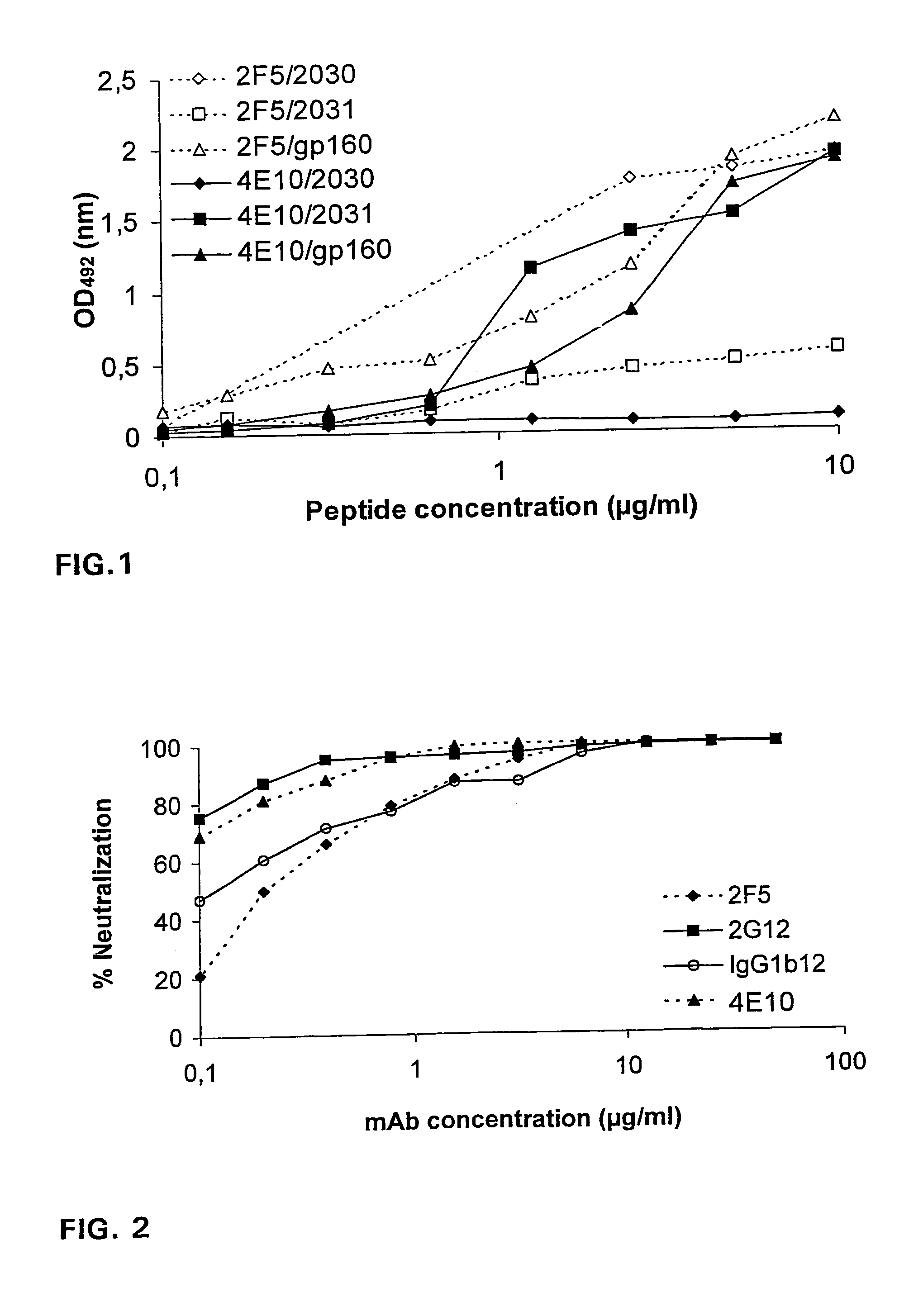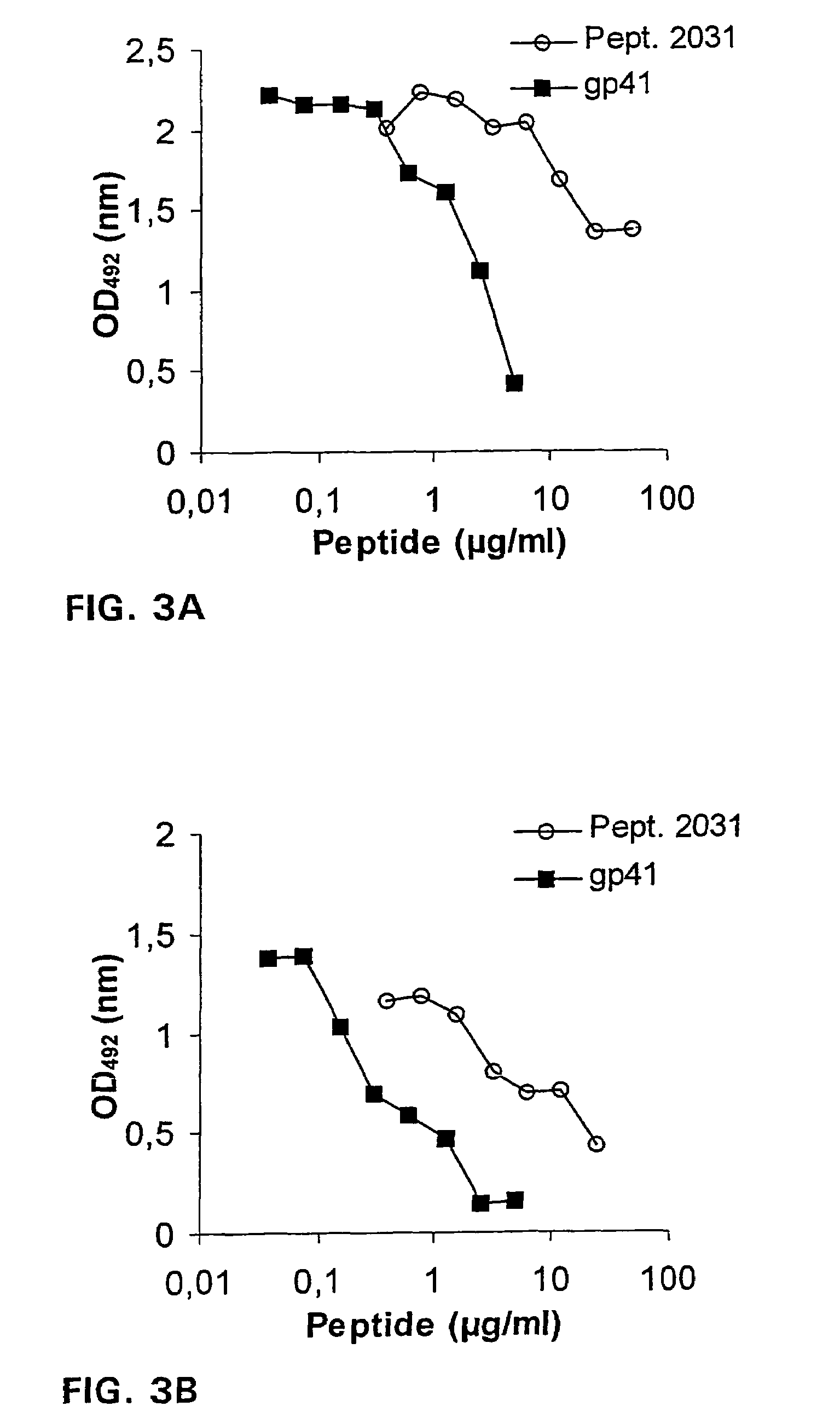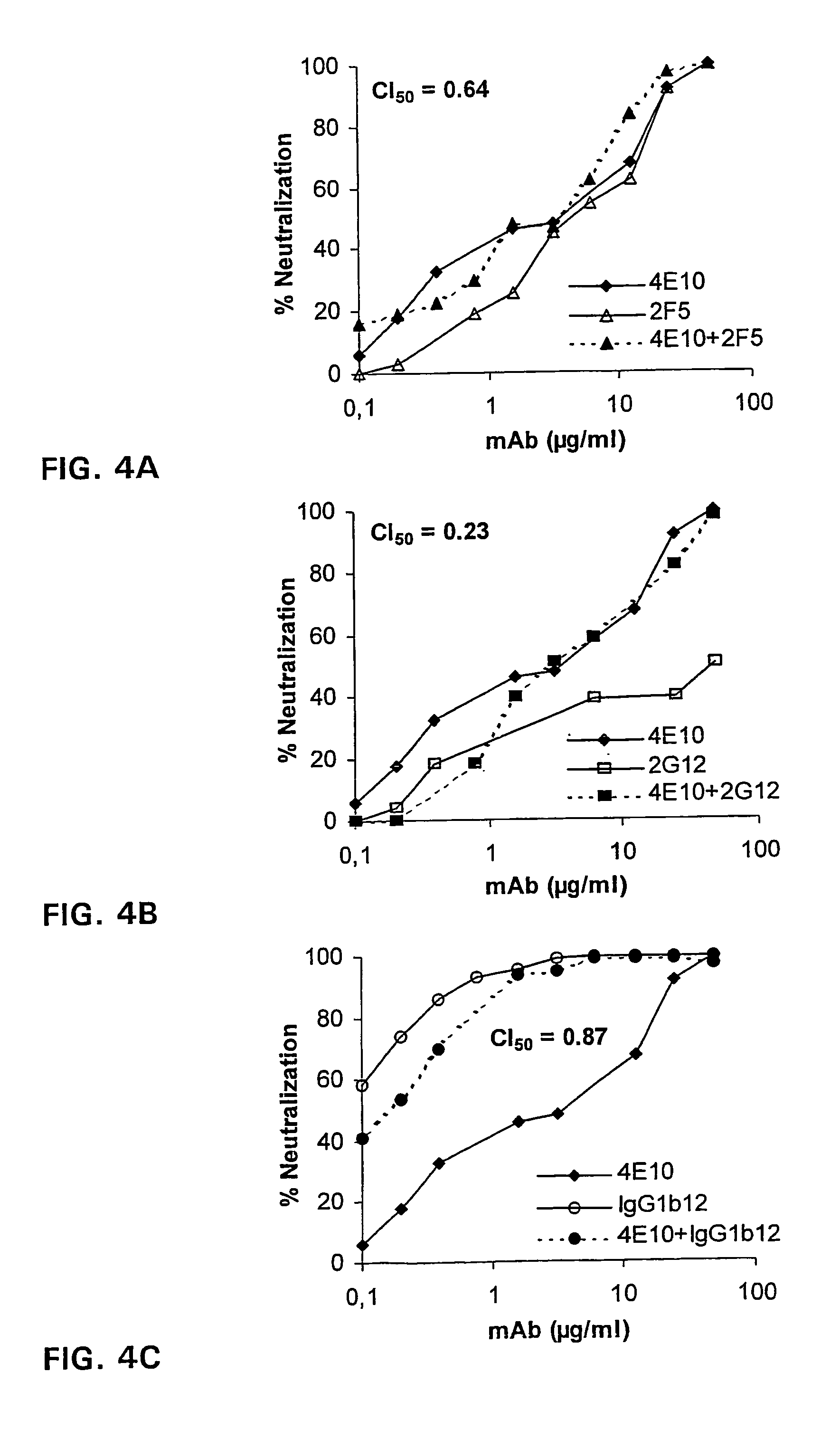IGG1 monoclonal antibody with anti-HIV neutralizing activity
a monoclonal antibody and anti-hiv technology, applied in the field of applied microbiology and vaccine development, can solve the problems of predicting poor diagnosis, affecting the role of humoral immune response in hiv infection, and affecting the response of hiv specific antibody responses
- Summary
- Abstract
- Description
- Claims
- Application Information
AI Technical Summary
Problems solved by technology
Method used
Image
Examples
example 1
Epitope Mapping by ELISA
[0038]For mapping of the 4E10 epitope, thirty-four overlapping gp41 peptides of HTLV-IIIMN (aa 501-856, Table 1) produced by AnaSpec, Incorporated, were derived from the AIDS Research and Reference Reagent Program (numbers 2015-2049). Most of these peptides were twenty amino acids in length with ten amino acid overlaps between sequential peptides. The peptide GGGLELDKWASL (SEQ ID NO: 14) was synthesized in-house.
[0039]The truncated E. coli recombinant gp41 MN peptide was provided by Dr. J. Raina through the NIBSC Centralised Facility for AIDS Reagents. Vaccinia-recombinant gp160IIIB was a gift from the Immuno-AG, Austria. Microtiter plates (Nunc Maxisorp, Roskilde, Denmark) were coated overnight at +4° C. with synthetic peptides, gp41 MN, or gp160IIIB at a constant concentration of 1 μg / ml or serial dilutions, starting with 10 μg / ml, in 0.1 M sodium carbonate buffer. Plates were washed with PBS containing 0.1% Tween 20 and blocked with 2% skim milk for 2 hour...
example 2
Immunofluorescence Analysis of 4E10 Binding Characteristics
[0055]To study the interaction of 4E10 with HIV-1 antigens present on the surface of infected PBMC and also a possible cross-reactivity with MHC class II, which had been reported previously (Buchacher et al., see above), we performed binding studies of 4E10 to unstimulated and to PHA-P stimulated HIV-1 negative as well as HIV-1 infected PBMC. The binding of 4E10 was compared to that of 2F5, 2G12, and HIVIG by indirect immunofluorescence using confocal microscopy and flow cytometry.
[0056]Significant binding was only detected to infected cells where 2G12 and HIVIG bound strongly and 4E10 and 2F5 displayed only weak reactivity (data not shown). Also, 4E10 did not bind any stronger to uninfected PBMC than did 2F5, 2G12, and HIVIG. No difference was observed between the results obtained for native cells stained at +4° C. compared to pre-fixed cells stained at 37° C.
example 3
Syncitium Inhibition Assay with T-Cell Line Adapted (TCLA) HIV-1 Strains
[0057]The capacity of the human monoclonal antibody 4E10 (=4E10-IgG1) to inhibit formation of syncitia by TCLA isolates HTLVIIIB, HTLVIIIRF, HTLVIIIMN, and cl82 in AA-2 cells was compared to the corresponding capacity of mAbs 2F5 and 2G12. MAb 2G12 recognizes a conformation-sensitive, glycosylation dependent epitope on gp120 unrelated to the V1, V2, and V3 loop or the CD4-binding site (Trkola et al., J Virol 1996; 70:1100-1108). 4E10 and 2F5 inhibited syncitium formation for all four viruses whereas 2G12 did not neutralize HTLV-IIIMN (Table 2).
[0058]
TABLE 2Syncitium inhibition assaya with mAbs 4E10, 2F5, and 2G12against T-cell line adapted virusesCladeCoreceptorIC50 (μg / ml)bIsolate(gag / env)(Phenotype)4E102F52G123D6IIIBB / BX4 (SI)1.00.30.4>50MNB / BX4 (SI)0.30.9>50>50RFB / BX4 (SI)12.54.42.4>50cI82B / BX4 (SI)6.30.33.7>50aAssays were performed on AA-2 cells using presence or absence of syncitium formation as read-out.bA...
PUM
| Property | Measurement | Unit |
|---|---|---|
| Density | aaaaa | aaaaa |
| Density | aaaaa | aaaaa |
| Density | aaaaa | aaaaa |
Abstract
Description
Claims
Application Information
 Login to View More
Login to View More - R&D
- Intellectual Property
- Life Sciences
- Materials
- Tech Scout
- Unparalleled Data Quality
- Higher Quality Content
- 60% Fewer Hallucinations
Browse by: Latest US Patents, China's latest patents, Technical Efficacy Thesaurus, Application Domain, Technology Topic, Popular Technical Reports.
© 2025 PatSnap. All rights reserved.Legal|Privacy policy|Modern Slavery Act Transparency Statement|Sitemap|About US| Contact US: help@patsnap.com



